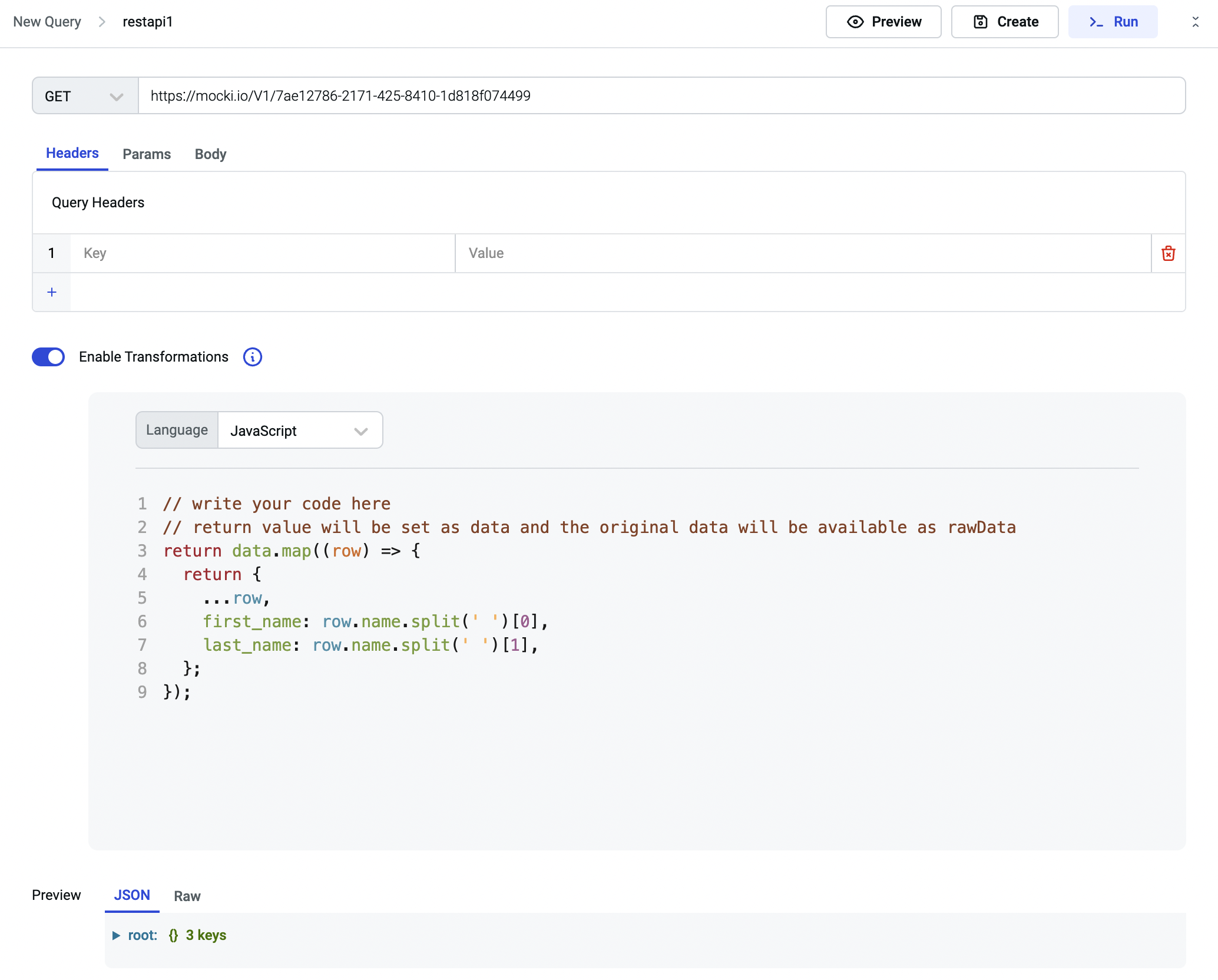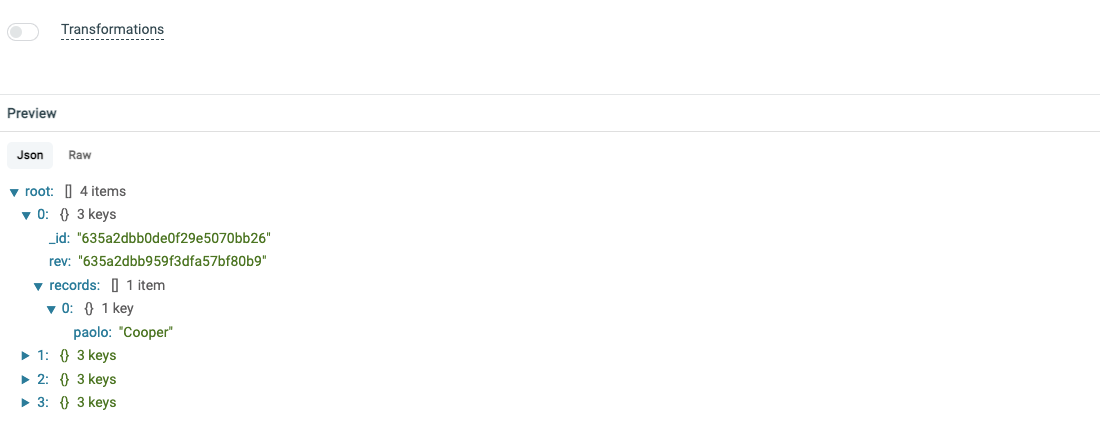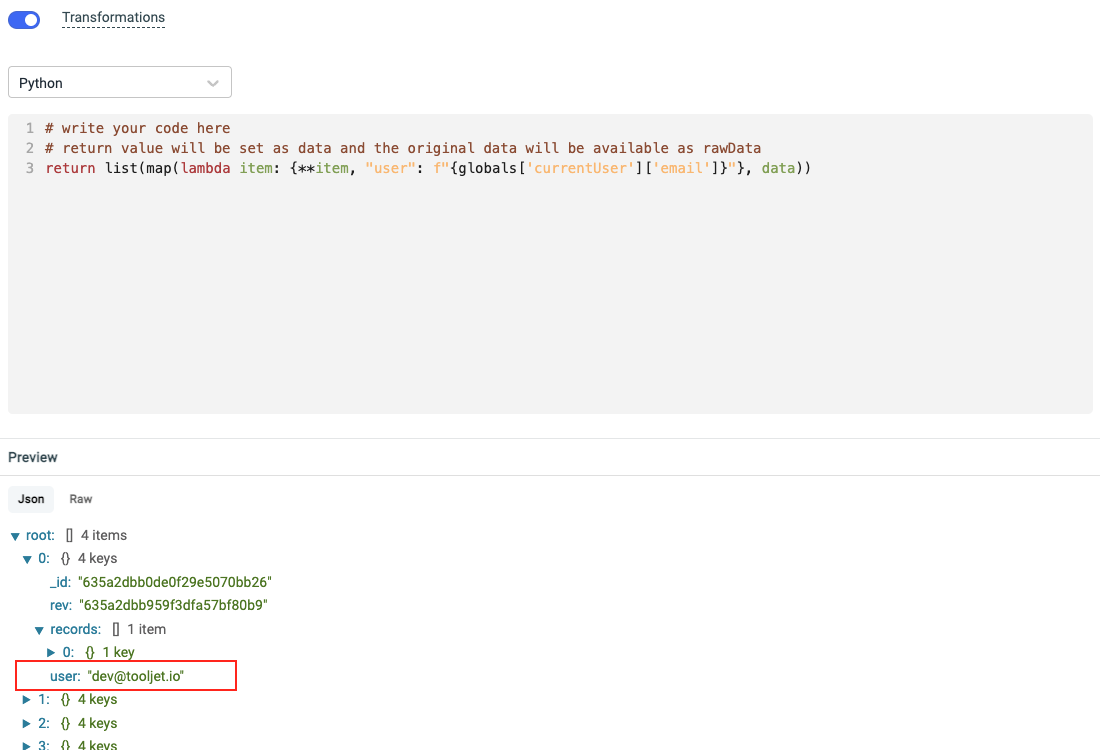Transformations
Transformations can be enabled on queries to transform the query results. ToolJet allows you to transform the query results using two programming languages:
Transform using JavaScript
Let's assume a query is returning the customers data with a name row, so we will write a simple transformation to compute first_name and last_name for all the customers.
// write your code here
// return value will be set as data and the original data will be available as rawData
return data.map((row) => {
return {
...row,
first_name: row.name.split(' ')[0],
last_name: row.name.split(' ')[1],
};
});
The query will now look like this:

Transform using Python
Let's use Python transformation to compute first_name and last_name for all the customers that we fetch in the previous step.
return list(map(lambda row: {
**row,
'first_name': row['name'].split(' ')[0],
'last_name': row['name'].split(' ')[1],
}, data))
Example
Let's take a look at the data returned by a RESTAPI (using mock data here):

Now we will transform the returned data using Python that will append a new key in the returned data called
userand that user will have the value from the exposed global variables of ToolJet which isglobals.currentUser.emailreturn list(map(lambda item: {**item, "user": f"{globals['currentUser']['email']}"}, data))Now, you can click on the preview button to check the transformed data.

Click the Save button to create the query. Saved queries can be run using the Run button on the top-right of query panel. Queries run using the run button will behave just as if it was triggered by an app event like button click and thus will alter the state of the app. You can view the query results using the state inspector on the left side-bar of the app builder.

We can see that first_name and last_name are added to all the rows in the data object of the query. If you need the original data of the query, it will be available in the rawData object of the query.
